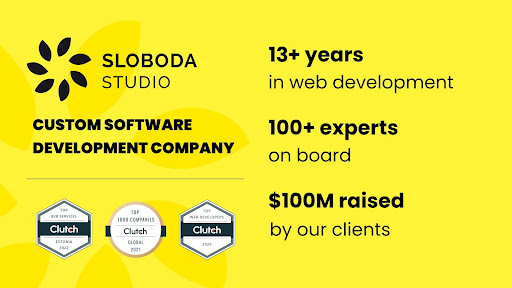The global tech ecosystem is expanding, and with that comes an increased demand to hire Ruby on Rails developers, as well as other competent software professionals. Ruby on Rails, often referred to as Rails, stands out as a leading domain in this surge. Renowned as a robust and agile web development framework, it offers businesses streamlined solutions for their digital needs. With the proliferation of digital platforms and applications, the need for skilled Ruby on Rails developers becomes paramount. This article aims to provide an insightful guide into the intricate process of scouting, evaluating, and hiring proficient Ruby on Rails developers to ensure project success.
Table of Contents
The Significance of Hiring Ruby on Rails Developers
Ruby on Rails, often simply Rails, is a server-side web application framework written in Ruby. Developers are in love with Rails for its convention over configuration (CoC) and don’t repeat yourself (DRY) principles. Hiring adept Rails developers can drastically improve the speed of web development, resulting in cost-effective, maintainable, and scalable applications.
Considering embarking on a project using Ruby on Rails technology? Reach out to a seasoned software development company, such as Sloboda Studio. With over 13 years in the industry, they’ve successfully executed numerous RoR projects with their dedicated team. Should you require RoR developers to bolster your team, Sloboda Studio is the ideal choice.

Define Your Requirements
Identifying Project Goals and Needs
Before launching the recruitment process, you should have a clear understanding of what you need. Identify the project’s goals and determine whether you need a full-stack developer, a backend specialist, or someone with expertise in a specific gem or library.
Creating a Comprehensive Job Description
A job description should provide a clear picture of the responsibilities, qualifications, and expectations. This will not only aid candidates in understanding the role but will also filter out unsuitable applications.
Where to Find Talent
Exploring Various Talent Sourcing Channels
Apart from conventional job portals, consider exploring developer-specific sites like GitHub or Stack Overflow. Ruby-specific communities and forums can also be a gold mine for finding specialized talent.
Effective Strategies for Attracting Candidates
Offering learning opportunities, competitive compensation, or flexible work arrangements can be enticing for potential candidates. Also, clear communication about the project’s potential and growth can attract the right talent.
Candidate Evaluation
Initial Resume and Portfolio Screening
Start the recruitment process by meticulously evaluating the candidate’s past experience and achievements. Delve into their involvement in open-source projects or personal initiatives. Check for familiarity with tools or technologies that resonate with your requirements, ensuring their background aligns with your needs.
Conducting Technical Assessments and Interviews
Leverage specialized platforms designed for coding evaluations tailored to Ruby on Rails. Couple this with a structured technical interview to gauge not just the depth of their coding knowledge but also their approach to complex problems. This two-pronged method offers a holistic insight into their technical competence.
Assessing Cultural Fit
Recognizing the Importance of Cultural Compatibility
While technical prowess is undeniably essential in any development role, it isn’t the sole determinant of a project’s success. The nuances of a company’s culture, its foundational values, and the intricate dynamics of its teams play a significant role. A developer’s ability to seamlessly integrate and resonate with these elements can often be as crucial, if not more, than their coding abilities. Ensuring cultural compatibility can lead to enhanced team cohesion, efficient communication, and a unified vision for success.
Behavioral Interviews and Team Fit Assessment
Traditional interviews often focus on technical knowledge, but behavioral interviews delve deeper. By presenting candidates with real scenarios or challenges previously faced by the team, you can glean valuable insights into their problem-solving aptitude, interpersonal skills, and adaptability. Such interviews can paint a vivid picture of how the candidate might respond under pressure, collaborate with team members, and contribute to the team’s overarching objectives. This approach aids in assessing the candidate’s potential fit within the team and the broader organizational culture.
Making the Offer
Crafting Competitive Compensation Packages
In the rapidly evolving tech landscape, attracting top talent hinges on more than just an enticing job description. It’s pivotal to research current market standards for salaries and benefits. Crafting a compensation package should not only be competitive but also tailored to reflect a candidate’s unique skills and professional experience. This ensures that potential hires feel recognized and valued, ultimately making your proposition more appealing in a bustling job market.
Successful Negotiation and Offer Extension
The act of negotiation transcends mere numbers; it’s a dance of understanding and alignment. Approach these discussions with an open mind, being receptive to the candidate’s perspective on terms, benefits, and specific role delineations. Mutual respect during this phase can set a positive tone for the ensuing professional relationship. Once an agreement is reached, the subsequent step, the offer extension, should be smooth and transparent, instilling confidence and eagerness in the candidate to embark on their new journey with the organization.
Onboarding and Integration
Smooth Transition into the Development Team
The initial integration phase is critical in setting the tone for an employee’s tenure. Onboarding acts as the cornerstone of a durable and effective professional relationship. It’s essential to ensure that the newly hired developer is not only introduced to their role but also feels an immediate sense of belonging. By making them feel welcomed, acknowledged for their skills, and adequately informed about the organization’s dynamics, you lay the groundwork for their active participation and commitment.
Setting Up Developer Environments and Training
Before a developer begins, their workstation and digital environment should be primed and ready. This entails setting up the necessary hardware, installing requisite software, and ensuring access to essential platforms. Given the diversity of tools available today, it’s likely that your team uses specific tools unique to your operations. Proper training sessions, tailored to these tools and the company’s workflow, can act as a catalyst, ensuring that the new developer integrates seamlessly, reducing the learning curve and accelerating project timelines.
Retaining Your Talent
Building a Supportive and Engaging Work Environment
culture where employees feel valued and heard. By offering consistent opportunities for feedback, employees feel a genuine connection to the company’s mission and vision. Encouraging innovation allows for creative freedom, ensuring that talents are not stifled but are continually nurtured. An atmosphere of mutual respect and collaboration promotes team synergy, ensuring that diverse skills and perspectives are harmonized towards achieving common objectives.
Career Development and Growth Opportunities
To ensure longevity in the workplace, it’s essential to invest in employees’ professional trajectories. Regular training sessions ensure that skill sets are not only updated but also diversified, meeting industry standards. Workshops can provide hands-on experience, promoting practical knowledge. Providing clear avenues for growth not only motivates developers to give their best but also cements their commitment to the organization, confident in the knowledge that as the company grows, so will their careers.
Final Thoughts
Hiring a Ruby on Rails developer, akin to sourcing any professional, undeniably demands a deliberate and strategic approach. In today’s competitive landscape, it’s paramount to truly comprehend your project’s specific requirements. Are you in need of a generalist or a specialist with expertise in certain Ruby gems? After ascertaining your needs, it’s vital to cast a wide net, extending beyond traditional recruitment channels to niche platforms and tech communities. However, recruitment is just the beginning. Cultivating a supportive and inclusive environment is key. Such an atmosphere not only attracts but also ensures the retention of top-tier Rails professionals, making your investment in hiring truly fruitful.





